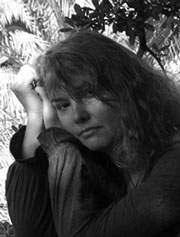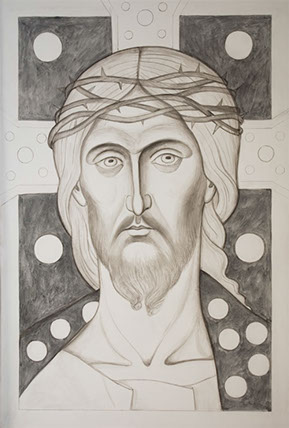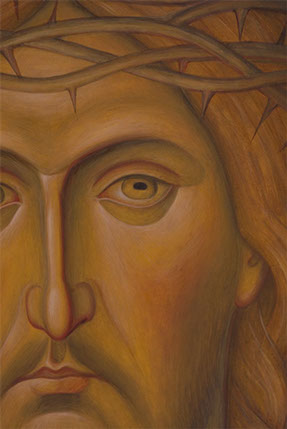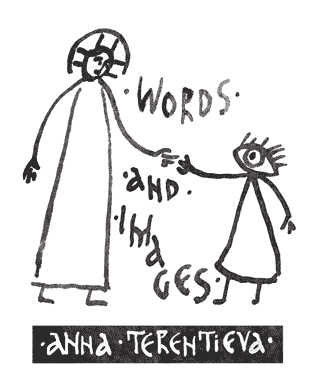 I am a Russian iconographer living and working in Australia. I belong to the Eastern Orthodox Church. My professional background is in fine arts with specialization in book illustration and design.
I am a Russian iconographer living and working in Australia. I belong to the Eastern Orthodox Church. My professional background is in fine arts with specialization in book illustration and design.
Apart from painting sacred images I also restore Roman Catholic statues and write on topics related to personhood, from a joint theological and psychological perspective. A number of my papers are about the peculiar set of problems presented to a believer by post-traumatic stress disorder i.e. how childhood trauma shapes a person’s psyche in a way that impairs or even destroys their ability to become attached to God. My particular interests are Christian mystical theology and the lives of saints-mystics, of both the Eastern and Western Churches.
See below for a more personal account about the character and purpose of my work and myself.
I was born in Moscow, then in the USSR. I received my professional education from two fine institutions, Moscow Art College and Moscow State University of Printing Arts. The latter was entirely dedicated to the art of printmaking and the book as an art form in its own right. My education happened to be during Gorbachev’s perestroika so I was exposed to a sudden appearance of “underground” – or prohibited culture and prohibited faith – as a very young person. That was an exciting time of hope and sincerity of intentions, for the idealists of my generation.
Sincerity and total dedication are the key words for the attitude to work which I was taught. It may sound strange, but the dying Soviet education system taught the future artists a certain moral code of a conduct, of their responsibility before some high ideals like “beauty” or “truth” (godless but still ideals). We were told that the way we design and illustrate books are capable of forming the reader’s sense of aesthetics and of enhancing (and not obscuring) the meaning of the text and that this was important.
I took the attitude “an artist for the art” and not “the art for an artist’s ego” for granted, just as later I took for granted a much more radical paradigm, that an iconographer is a servant of God who ought to forget his ego entirely and make out of herself a suitable tool responsive to the will of God. This is why, when I was advised by my confessor to begin painting icons, I was literally shaking with fear of the responsibility of painting the faces of God and the Saints. I am not unique in this attitude; those professional artists who like me became iconographers after conversion to Eastern Orthodox Christianity during perestroika, out of their desire to serve God as artists, also speak about it as the only possible attitude to our work. A peculiar character of the vocation of an iconographer as a blessed (albeit self-renouncing) way to serve God and His Church has never been questioned in Russia, even while being clandestine during the Soviet regime.


In 1999 I moved to Australia and was exposed to a completely different culture where the understanding of the place of an icon in worship and of the vocation of an iconographer were absent. As a result of my new experiences, I began studying analytical psychology and later the mystical theology of the Roman Catholic Church. When I came across Carmelite spirituality my activity in different areas began to come together, forming a whole. Seeing and studying Western medieval sacred art (during extensive travels) with its focus on the suffering Son of Man completed the picture.
Although I knew that Christ is supposed to be the center of a life of a Christian and, furthermore, was fortunate to feel, via reading the books of Fr Alexander Men (a contemporary preacher and theologian) the undeniable reality of the relationship between a believer and Christ, it was the writings of the Western mystics that gave a name to something I was after without realizing it – a personal relationship or, speaking the language of psychology, a secure attachment to the Person of Christ. That realization, in turn, gave a new direction to my icon painting and put all my activities – icon painting, theology and psychology – together into one.
Christianity is the only religion based not on human attempts to climb up to God but on Him stepping down to humans, on the direct revelation of God to humans given not via visons or inspired writings but via the divine human, Son of God and Son of Man in one Person, Jesus Christ. Christ did not bring the revelation, He Himself is the Revelation of God, the Word became flesh. Most importantly for me, the Word became incarnate not just in flesh = body but in a human psyche.
Carmelite mystics (so as all mystics of the undivided Church before the Schism) thought about union with God in love as an ultimate purpose of every human soul. Our Lord said that His disciples are supposed to be like branches of a vine remaining in Him Who is the vine otherwise we/they can do nothing. Translating those words into the language of human psychology, via a decision to reject oneself and follow Christ the psyche of a human person enters into a communion with the psyche of Jesus Christ and becomes slowly and painfully transformed into the likeness of His perfect humanity. This happens, as St John of the Cross stated, only via love and desire to be with Christ for His own sake, not at all dissimilar from a very human desire to be with one that he loves. I understand the Carmelite path as a transformation of the human psyche via the communion of a human person with the Person of Christ; the psyche of Christ burns down in a soul all that contrary to it, especially self-love.
Jesus Christ seeks a soul out first; her task is to respond. The Eastern Orthodox icons, unlike most of the late renaissance and post-renaissance religious art in the West, depict Him actively seeking a soul; the Person of Christ is trying to engage with the viewer in the hope of getting a response.
The depicted person attempts to distract the viewer from his preoccupation with his limited self and invites that limited self into the infinite Self of God. If it happens, the human self is not lost but embraced by the Person of God, very much akin to the process of prayer described by the Carmelite mystics. This similarity is not at all surprising because both Carmelite mystics and those who pray before icons seek communication with the Other. They need another Person and they want to engage.
So, this is what my work is about: I write and paint what I believe can aid those who seek God and want to be with Him.
It is customary to state on the iconographer’s website “my icons are painted in accordance with the Canon of the Christian sacred art”. They are. I would not dare to violate the rules for icons and iconographers laid down by the Church; also, their violation does not make any sense because the rules are to help to make a more truthful icon. It is impossible to separate the content of an icon from its form, the so-called Canon has been formed in the process of the Church accepting all that is theologically (and psychologically) correct and rejecting all that is incorrect and distorts the image of the Person of Christ (and of Our Lady and the Saints). However, since many outside the Eastern Orthodox Tradition are not exposed to the dazzling variety of the historical, local and personal styles, my icons may appear to be “different” to them. To place them in context and to give the reader some idea about how different the icons can be I made ‘Iconographer’s reference’ and also translated the text about the work of an iconographer written by one of the most remarkable iconographers of the 20c. century, Sr Ioanna Reitlinger who is one of the major influences in my work. There are also other papers on this website which may be helpful for learning more about what an icon is and what it is not.
It will suffice to say here that my icons are very much influenced by the medieval sacred art which appeared in some areas in Italy, being formed by a fertile exchange of ideas between Greek and Italian iconographers, East and West (like styles of Pisa and Siena), by Russian icon which are often more “psychological” and intimate than Greek, by the earliest Christian sacred art and of course, by who I am as an artist and Christian.
There are many different icons in the world. It is important to find one to have affinity with, one which speaks to the soul.
If you are interested in discussing the issues which are the area of my expertise or in commissioning me an icon (I paint icons of the saints canonized by the Eastern Orthodox and Roman Catholic Churches) or purchasing an existing one, please contact me using the “Contact” page.
Education
1993 – 1998 Moscow State University of Printing Arts, Master’s Degree in Graphic Arts
1984 – 1988 Moscow Art College, Diploma of Graphic Arts
Representation
Private collections and churches: Australia, Russia, UK, Ukraine, USA.
My detailed CV can be found here.
